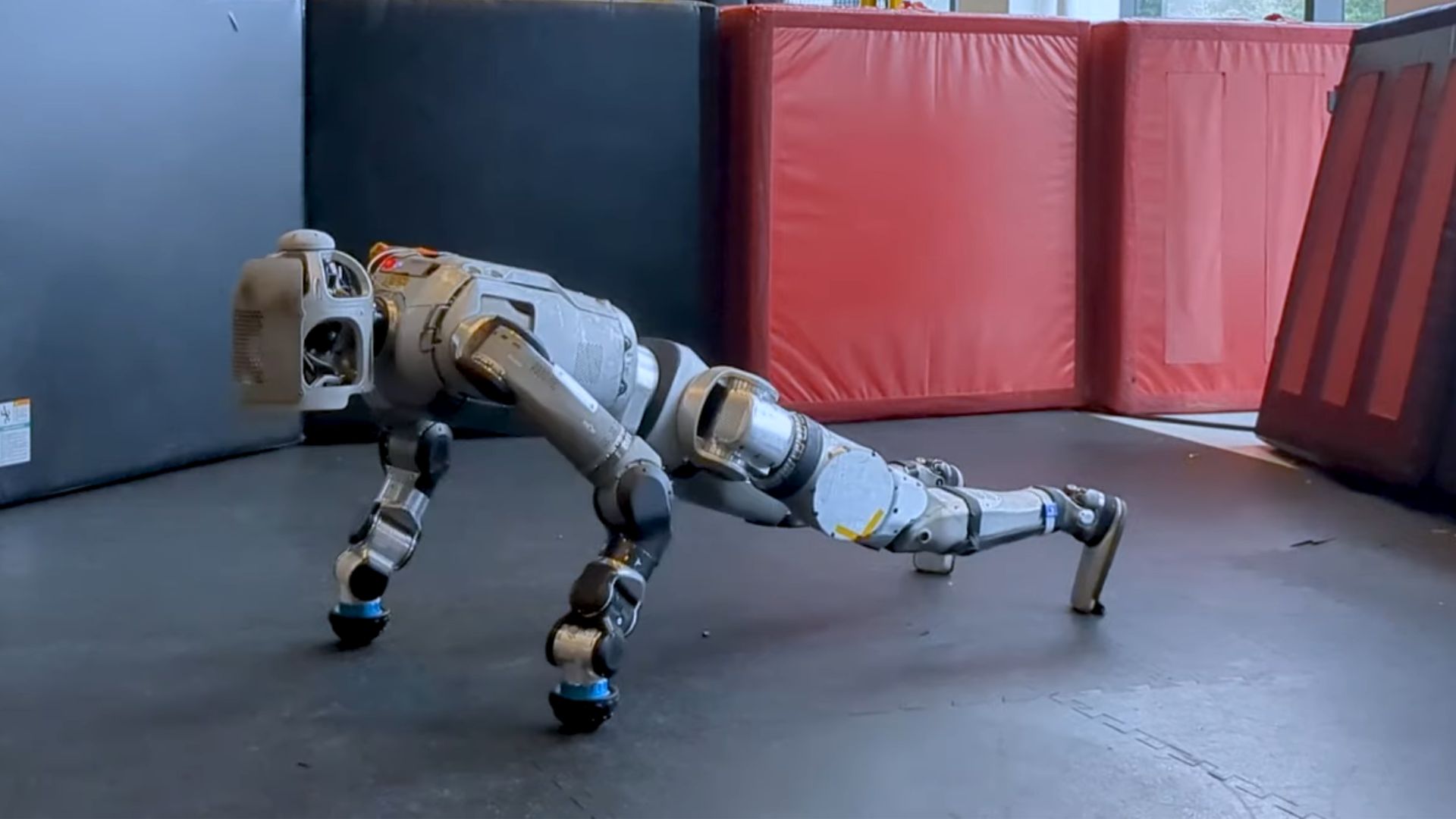Boston Dynamics has once again pushed the boundaries of robotics with its latest upgrade to the electric Atlas robot.
The new version of the humanoid robot has showcased its ability to perform push-ups. This has also earned it the nickname of “BRATlas.”
The impressive upgrade was first teased in a short video shown during a recent conference presentation, and Boston Dynamics has now shared a clip on its official YouTube channel.
This achievement marks a significant leap forward in the development of humanoid robots, combining advanced mobility, strength, and agility in a single machine.
Notably, the robotics company launched the electric robot Atlas in April this year.
“The electric version of Atlas will be stronger, with a broader range of motion than any of our previous generations,” said Boston Dynamics at the time of launch.
Advanced control and hardware
The new electric-powered Atlas has been equipped with an advanced control system and state-of-the-art hardware that provides improved power and balance.
This allows the robot to execute push-ups, a task that demands precise control and coordination, mirroring the capabilities of the human body.
While the ability to perform push-ups may seem like a minor feat, it underscores the complex engineering behind Atlas.
“The next generation of the Atlas program builds on decades of research and furthers our commitment to delivering the most capable, useful mobile robots,” says the company on its website.
The robot’s electric actuators and sensors operate in unison to manage weight distribution, balance, and movement, all while ensuring stability.
Real-time perception allows Atlas to see its surroundings using depth sensors to generate point clouds of the environment.
Exploring humanoid potential
“We use Atlas to explore the potential of the humanoid form factor, leveraging the robot’s whole body to move with grace, speed, and dexterity,” remarked Boston Dynamics.
This impressive dexterity opens possibilities for more complex applications in both industrial and service sectors, where robots may need to navigate challenging environments or perform tasks requiring human-like precision.
“Atlas demonstrates our efforts to develop the next generation of robots with the mobility, perception, and intelligence needed to be commonplace in our lives,” asserted the company.
The electric Atlas represents a major step forward from its hydraulic predecessor, which was retired in April.
“We are continuing to build on those existing capabilities and are exploring several new gripper variations to meet a diverse set of expected manipulation needs in customer environments,” the company had highlighted while launching the electric version of Atlas.
Intense competition among next-gen robots
Interestingly, the competition between new humanoid robot models has intensified lately.
For instance, just a few days ago, China launched a new Humanoid robot that could perform several complex tasks, such as doing Kung Fu or kitchen chores.
Prior to that, LimX Dynamics had uploaded a video on YouTube which showed its humanoid CL-1 robot successfully lift heavy objects.
Multiple research studies are also going on to integrate emotional and natural quotients into humanoid robots.
In this series, researchers in Germany recently developed a method to enable robots to sense and interpret human touch without using expensive synthetic biomimetic skins or sensors.
The new Atlas capable of doing push-ups testifies to this continued innovation in the field of robotics, blurring the lines between human and machine capabilities.
ABOUT THE EDITOR
Aman Tripathi An active and versatile journalist and news editor. He has covered regular and breaking news for several leading publications and news media, including The Hindu, Economic Times, Tomorrow Makers, and many more. Aman holds expertise in politics, travel, and tech news, especially in AI, advanced algorithms, and blockchain, with a strong curiosity about all things that fall under science and tech.

